Lê aqui a review MoustachesToys do leitor de CDs e DAC Accuphase DP-450

Could this be the ultimate CD player for those who still believe in the magic of the silver disc?
With impeccable build quality, a captivating sonic signature, and modern functionalities, the Accuphase DP-450 brings the pleasure of physical listening back to the most discerning audiophiles. This review isn’t technical, it’s emotional, but it doesn’t skip over the details that truly matter.
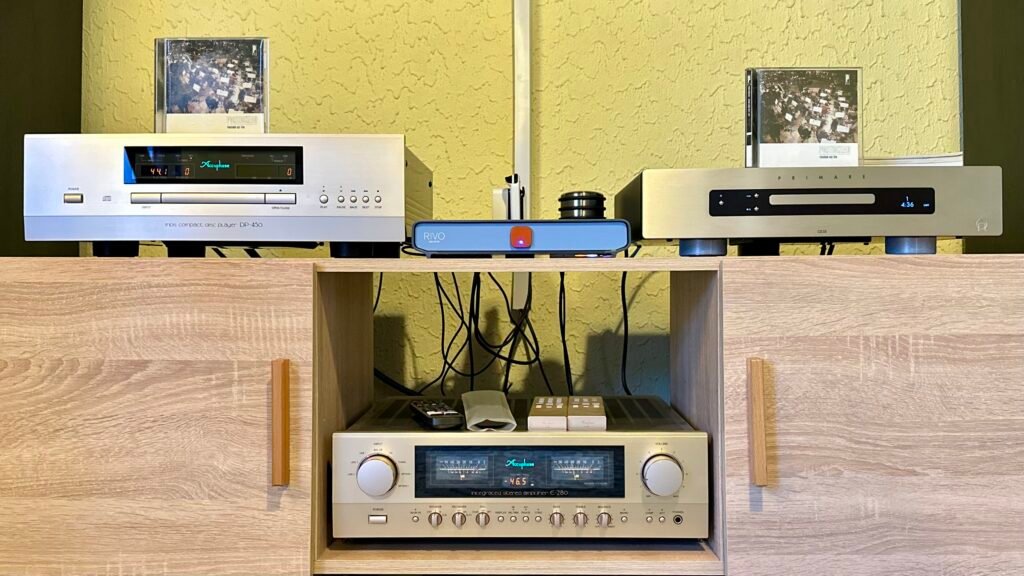
I like to think that those who follow my writings aren’t just looking for technical descriptions of machines. I’m not a journalist or a communicator by academic training. In a way, I am something close to that, but through hands-on experience and initiative, which is why I feel freer and less formulaic.
The Accuphase DP-450
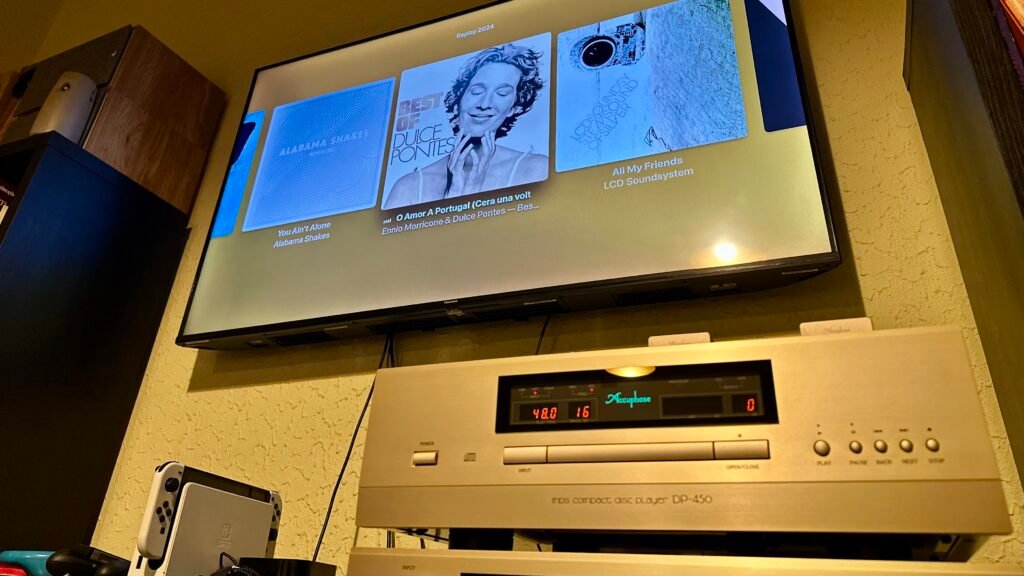
The Accuphase DP-450 is a machine that combines a CD transport and a more than competent DAC (far beyond competent), which can also be used with other external digital sources, all in one sleek package. It pairs beautifully, not only aesthetically, with the E-280 integrated amplifier from the same brand. The integrated is the reference in my home system. This is a machine that exudes Japanese craftsmanship from every pore.
Of course, the DP-450 doesn’t have pores. But it has soul, and a solid build, silent operation, and a sublime user experience.
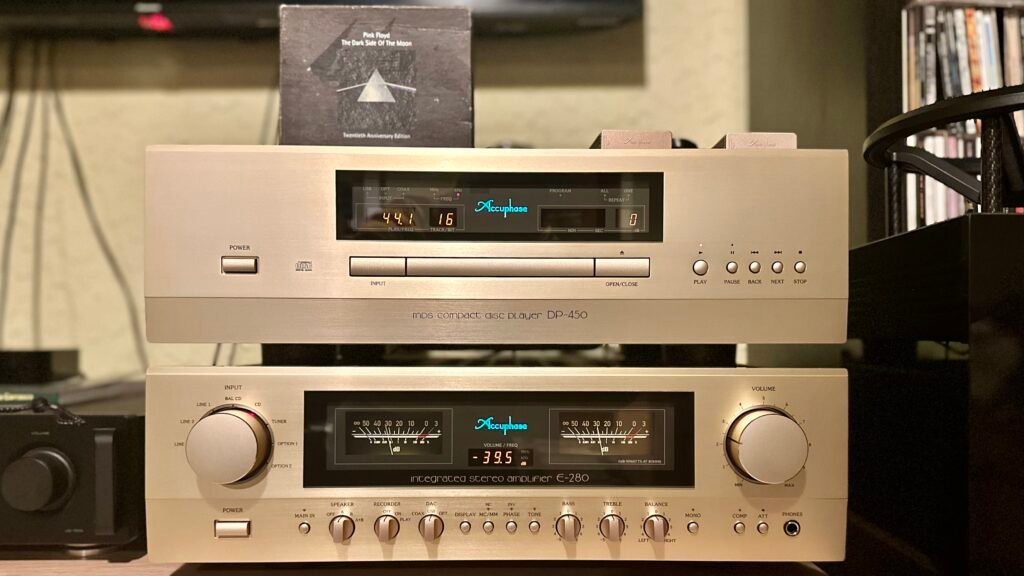
The drawer opens and closes with a smoothness and silence unlike any machine that has passed through here before. The metal top of the case, covered in a soft-touch material, almost velvet-like, conveys a refinement that you can feel even before you hear it. The panel, depending on the mode selected on the remote, alternates between elapsed time, remaining time, or the bit rate and bandwidth of the track.
Important, when using the DP-450 as an external converter. At home, it served those functions with the resident streamer (Volumio Rivo), the living room TV, and other digital players that passed through over the last six months. The unusual weight for a CD player, 13.7 kg (20 kg with the double transport box), says a lot about the attention to build quality.
And the remote? Aluminum, of course.
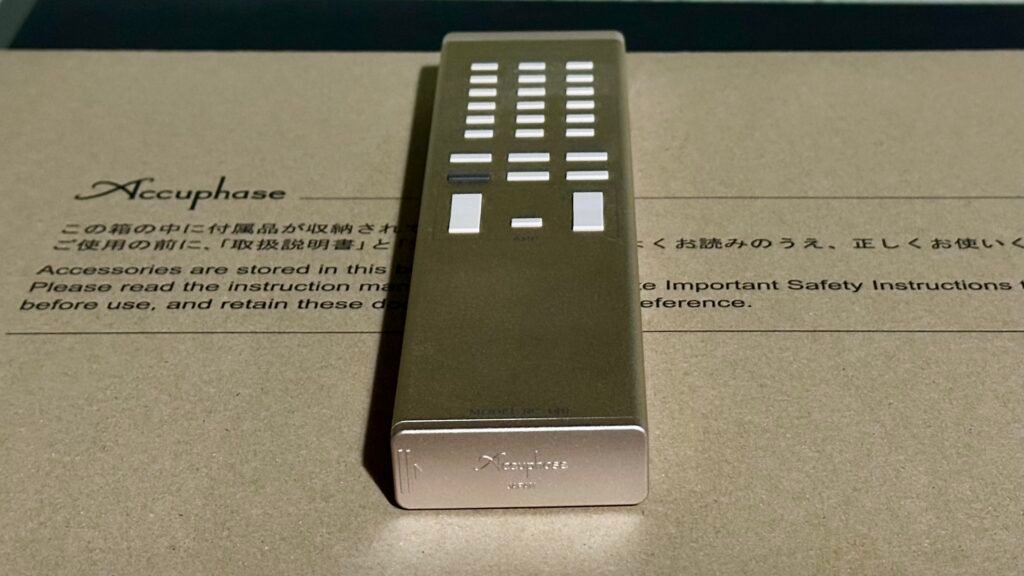

The “meaty” sonic signature of Accuphase—don’t confuse it with “heavy”—has won fans among everyone who’s listened. This CD player stayed with me through last winter and spring, and it was only returned because another converter—the one that stole my heart almost a year ago—is about to arrive.
The Year: 1996
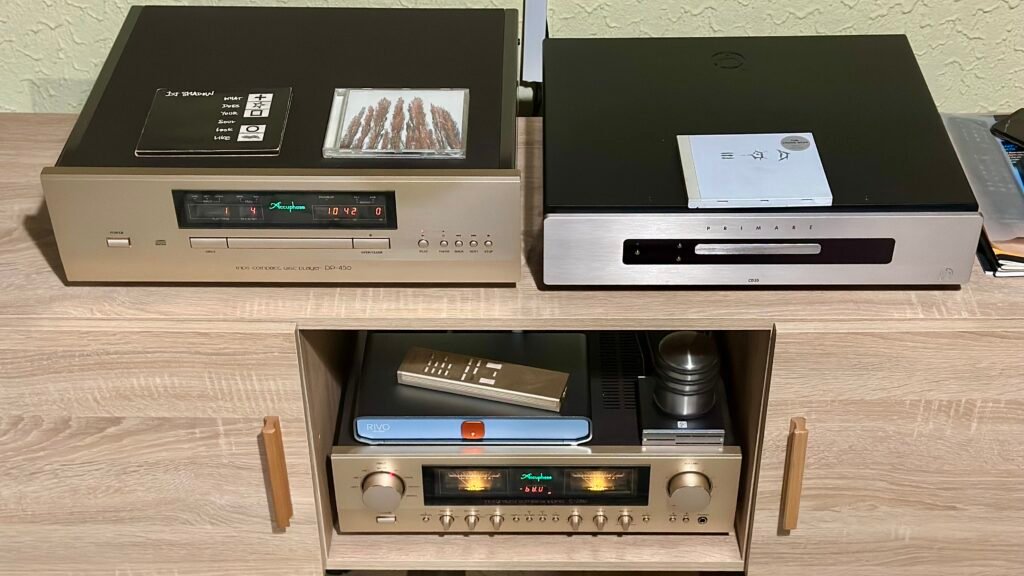
A few years prior, my father made an effort to buy a mid-range Pioneer system for his music-loving firstborn, on a payment plan. Something many won’t understand today, but back then, it was a luxury for the lower-middle class we were part of. I spent everything I earned from a job no respectable Portuguese would take today, just to buy CDs. And to have a drink at night.
That year, the first modern-era Vilar de Mouros Festival took place. It might not have been the most impressive festival, but for me, it was. The performance by The Young Gods, along with Primitive Reason, who shook the soft earth with their ska rhythms. Literally.
When a performance moved me like that, it was certain: one of the CDs I would buy that week would be from that band. So, I went to Tubitek in Porto to get Only Heaven, the album they had come to promote in Alto Minho. To better understand the sonic signature I’d come to love (it’s easy to get used to what’s good), I used the Primare CD35 for comparisons.
Industrial Cinematic – The Young Gods, Only Heaven
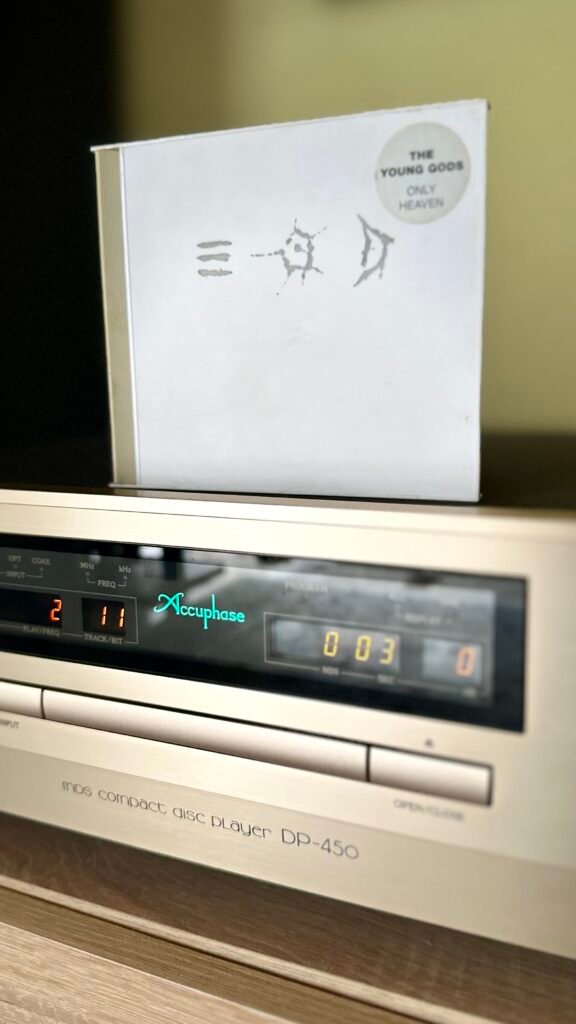
Listening to this album today, especially with the DP-450, is like returning to that stage, to the intensity of that summer night. The Accuphase sonic signature softens the natural aggression of Strangel’s bass. There’s air moving through the speakers, there’s presence. But with refined contours and smoothed edges.
On the CD35, despite a slightly faster attack and interesting detail (which had caught my attention in the review I dedicated to it), the DP-450 wins in how it dissects each sound sequence. The music feels like a team sport on the Japanese player. On the Swedish one, each note tries to shine alone.
Moon Revolutions, with its 16 minutes and 34 seconds, is an industrial odyssey shifting between shadowy, charcoal-drawn landscapes and ethereal watercolours. The CD35 paints both. But the DP-450 transitions between them with cinematic fluidity. The Japanese machine materializes music more vividly. Kubrick would surely have approved this as part of 2001: A Space Odyssey—had Franz Treichler been playing with machines back in the ’60s.
Interview at the Fado Museum – Portuguese Emotion
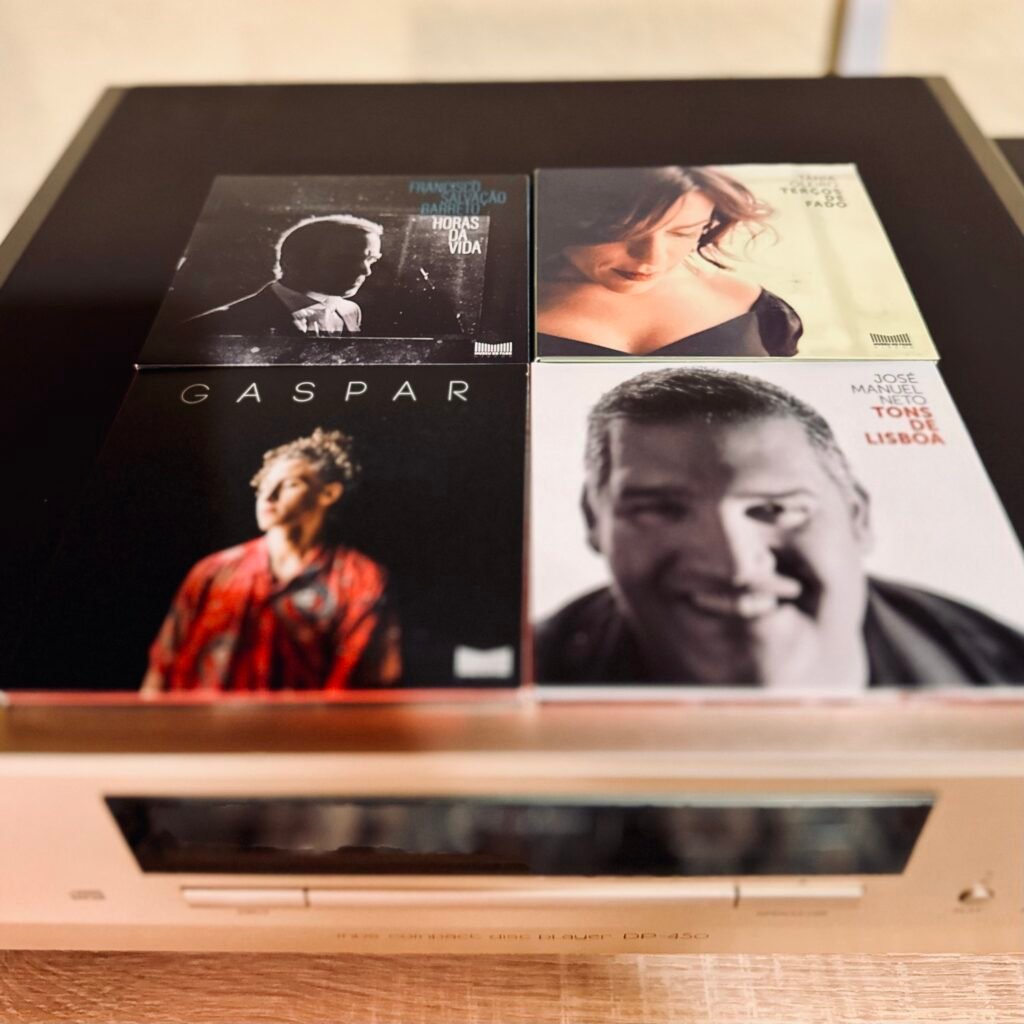
One of the reasons die-hard CD fans like me defend the format is this: some editions or tracks aren’t on streaming services—or they vanish without notice.
January 2020, just before the world paused for COVID-19. During my 9-to-6 job, we visited the Fado Museum and interviewed its director, Sara Pereira. At the end, she kindly gave us four CDs released by the museum. One of them has been with me ever since: Gaspar, by Gaspar Varela, virtuoso of the Portuguese guitar and great-grandson of Amália’s sister, Celeste Rodrigues.
On track 2, Mudar de Vida, originally by Carlos Paredes and with Ricardo Toscano on sax, the DP-450 brings everything to the table. A piece of silence and sentiment. Once again, the CD35 reveals speed and a beautiful wooden tone on the sax. But the Accuphase? It crushes me emotionally.
The music reaches down my back and into my spine. Gaspar, Ricardo, and the DP-450 sound more determined. More resolute. The gloss coating the CD35 applies is gone, and instead of a showcase for the music, we touch the instruments—or rather, the music touches us.
’90s – Ancestral Beat
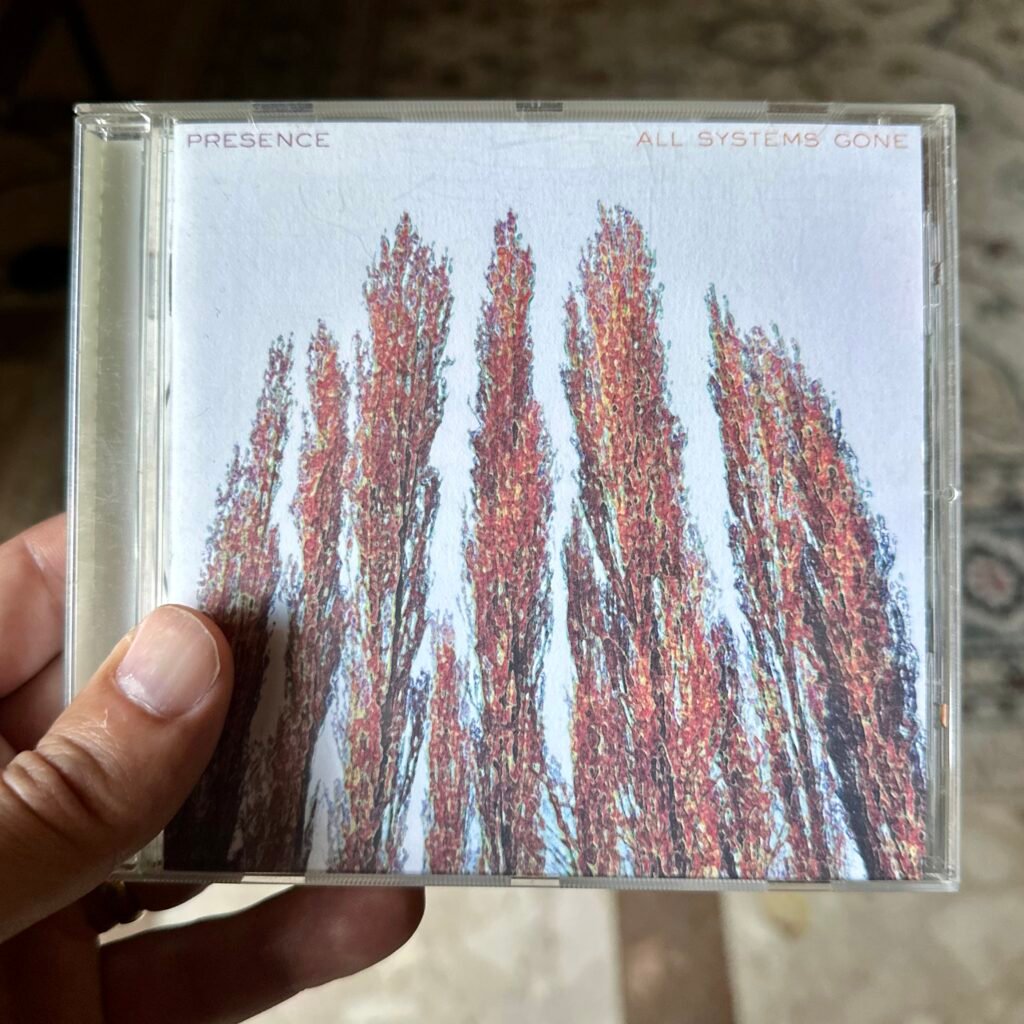
Some records just don’t live online. The danceable sounds of the ’90s and early 2000s were pivotal for me. All Systems Gone, by Presence (aka Charles Webster), left a mark. And I almost forget it exists because it’s not a click away.
The CD35’s punch on Future Love impresses. But the DP-450 hits with more resolve—yet somehow gentler. As if the drummer’s stick were wrapped in soft cloth. Bass drops deeper, more textured. Detail shines—especially in highs, like the falsetto in Been 2 Long. Everything is more distinct, but more unified.
In Your Spirit, the DP-450 glows in harmony with the E-280. Lullaby is pure bliss.
And Shara Nelson’s voice on Sense of Danger? The same voice from Unfinished Sympathy by Massive Attack. Beats lead, but they don’t overshadow her voice.
DJ Shadow – Rococo Turntablism
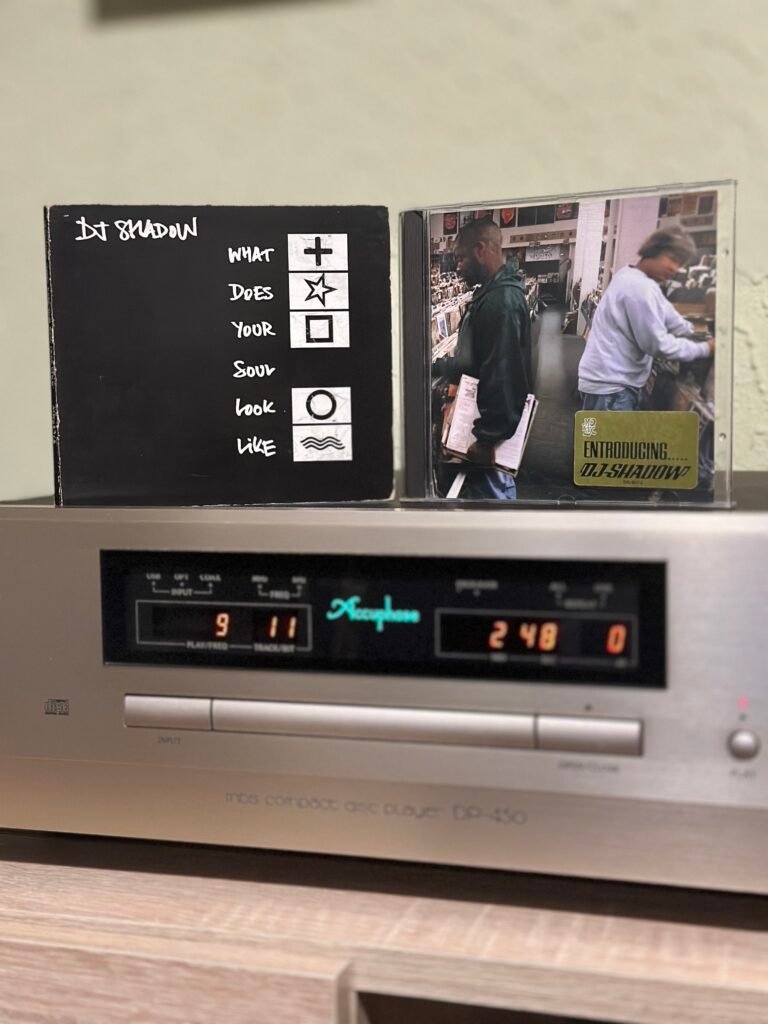
Everyone knows Endtroducing, right? It introduced DJ Shadow to the masses. What Does Your Soul Look Like, Pt. 4 spawned a full EP. The whole album feels like a B-movie soundtrack composed on acid. Half an hour of trippy genius. Sometimes rococo.
The DP-450’s subtly veiled character takes us through Joshua Paul Davis’s world. Tracks 2 (Pt. 3) and 3 (Pt. 4) drift in a languid rhythm—more memory than beat.
The CD35 is fabulous. But the DP-450 lives the music. And lets it live through us.
Still in the CD Era – Fuzz and Saudade
The restrained yet intense aura of Red House Painters‘ 1993 self-titled album is perfectly rendered by the Japanese player. Bubble and Helicopter revisit my teenage years with Saudade.
The Accuphase wraps this album in wildflower honey. My spine softens. Thank you, Accuphase, for making me feel this again at 50. The fuzzy guitar in New Jersey doesn’t scratch. And Star Spangled Banner, their version, feels like an anthem of resistance, especially now.
Nordic Blade – Dynamite
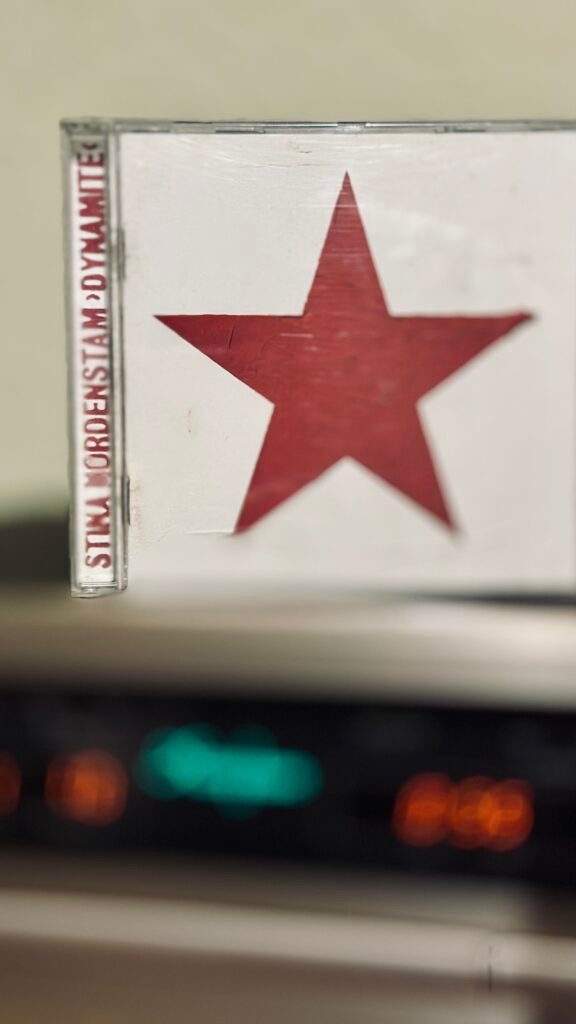
And speaking of sharp records: Dynamite. After the honey of And She Closed Her Eyes, Stina Nordenstam breaks expectations. No jazz-lounge this time. She cuts deep.
And the Accuphase? Surprisingly honest. It doesn’t filter. It delivers. Intensity, without pain. Like a Takumi sword, razor sharp, but soul-forged.
Finale with Leoncavallo
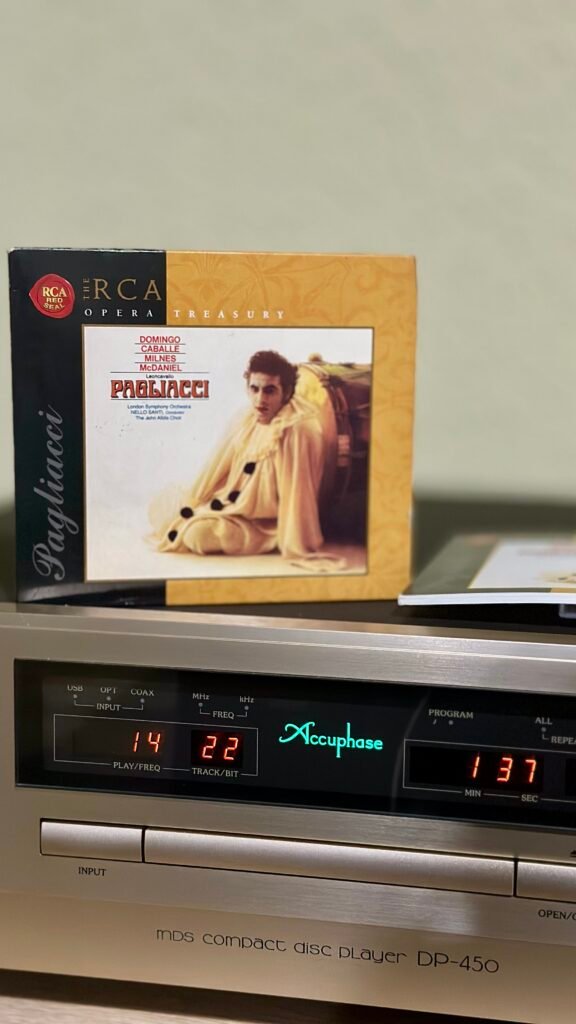
Ancient wisdom meets modern grace. Italians and Japanese, often opposites, some say. But in Pagliacci, it’s unity that wins.
Vesti la Giubba, sung by Domingo, conducted by Nello Santi, backed by the London Symphony Orchestra. The grief of Canio reaches us, carried by the transparency, scale, and drama of the Revival Atalante 3 speakers, guided by maestro DP-450.
Thank you, Accuphase. For the music. For the journey. For the emotion.
And the Converter?
Like all CD players, the DP-450 includes an internal DAC. But thanks to its digital inputs and outputs, it can also serve as a high-level external DAC (used here with the Volumio Rivo).
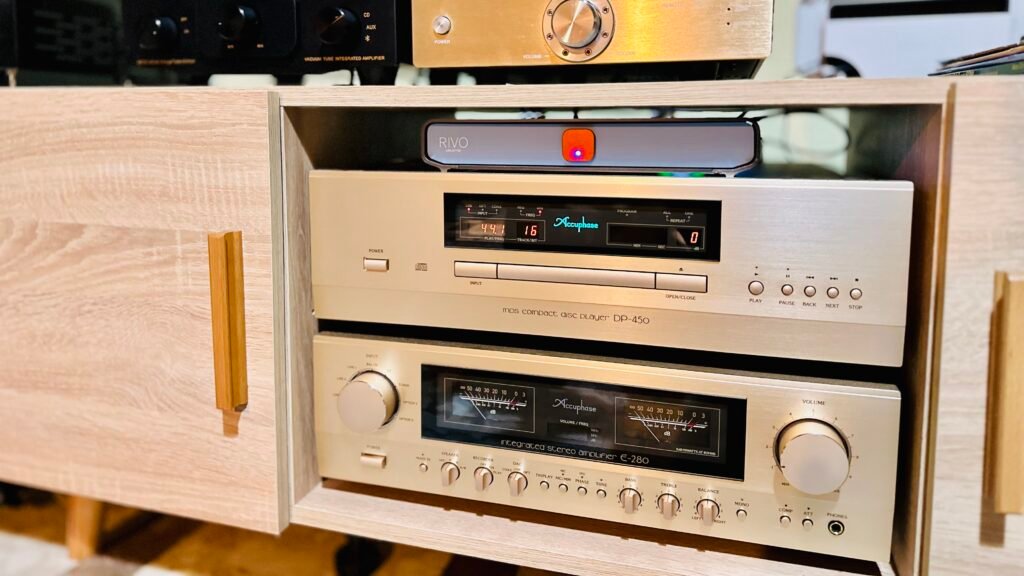
I dare say it embarrasses many DACs built for that sole purpose. It can also act purely as a transport. But any DAC you pair with it better be very, very good.
Time to Wrap It Up
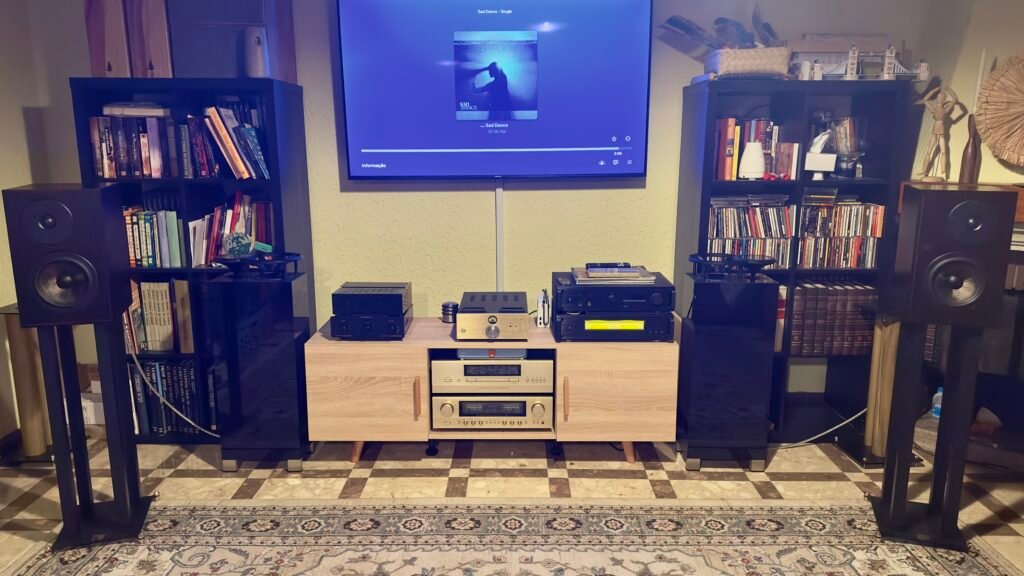
Because yes, this review is long. And if you’ve made it here, dear reader, I salute you, in these times of short attention span and even shorter patience.
The Accuphase DP-450 isn’t just for CD nostalgics. It’s a reminder that the physical format can still move, enchant, and amaze.
Built like a Swiss watch. With a Japanese soul. For those who listen with their heart and demand with their ears.

If your heart beats with every nuance of a CD, the DP-450 will make it pulse with new intensity — pure Japanese luxury for your system.
Listen to it. Compare it.
And let yourself be moved by music — like you haven’t in a long time.
Specifications

Final Note
I’d like to thank Ultimate Audio, the official Iberian distributor of Accuphase, for kindly providing this DP-450 unit, which stayed with me for over half a year. During that time, it was integrated into a test system that hosted not only my resident components, but also several other machines that passed through. This extended listening period, and the opportunity to compare it with a variety of gear, was essential to fully appreciate the quality and sonic character that the DP-450 brings. My sincere thanks for the chance to explore the full potential of this remarkable piece of Japanese engineering.

Pingback: Accuphase DP-450, uma viagem entre memórias e música - MoustachesToys
Os comentários estão fechados.